A step-by-step guide to replanting onions in the fall and further caring for them
Onion is an unpretentious perennial plant that can grow and produce a harvest in the same place for 4-5 years. But experienced gardeners recommend annually rejuvenating the plantings by dividing the nests and planting the children in a new place. This method of growing crops allows you to significantly reduce the onion fly population on the site and already in April you can cut the first bunch of juicy and fragrant greens.
We have prepared for you simple step-by-step instructions for replanting the plant and further caring for the crop in the spring.
Why and when to replant onions in the fall
Onion - perennial plant. His grow to obtain juicy greens with a mild taste and light onion aroma.
Sowing of batun is carried out traditionally by seed method. The seedling method is considered one of the most reliable and reduces the risk of developing infectious diseases.
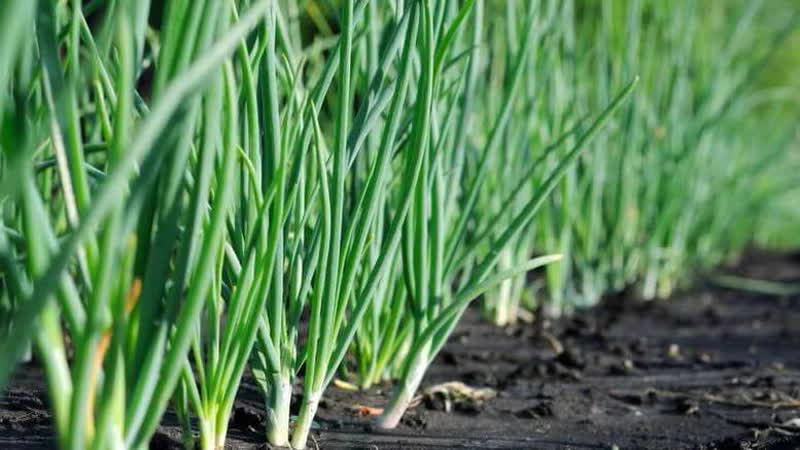
Increased frost resistance allows for winter sowing of batun to obtain greenery in early spring.
An annual autumn transplant to a new location is carried out in order to rejuvenate the plant and prevent the spread of onion fly. In thickened landings favorable conditions develop for the reproduction of the pest, which is quite difficult to get rid of. The time for transplantation is late August-early September.
Transplant technology
Transplanting the baton begins with preparing the site and seedlings.The plant transplantation procedure itself is quite simple and does not require special knowledge and skills.
Preparatory work
Onions grow best in open ground after cabbage, tomatoes, peas, beans, squash, zucchini, eggplant, lupine, flax, and oats. Not recommended grow culture after carrots, garlic and onions.
The selected area is dug up, loosened and, if necessary, soil fertility is increased. Batun prefers breathable and nutritious soil with a neutral or slightly acidic reaction (pH = 6.5-7.5). The ideal soil for the crop is loam and sandy loam.
Heavy, clogged soil is loosened with sand - 3 kg per 1 sq. m. Wood ash (200 g per 1 sq. m) normalizes the pH level and enriches the soil, which is poor in nutrients.
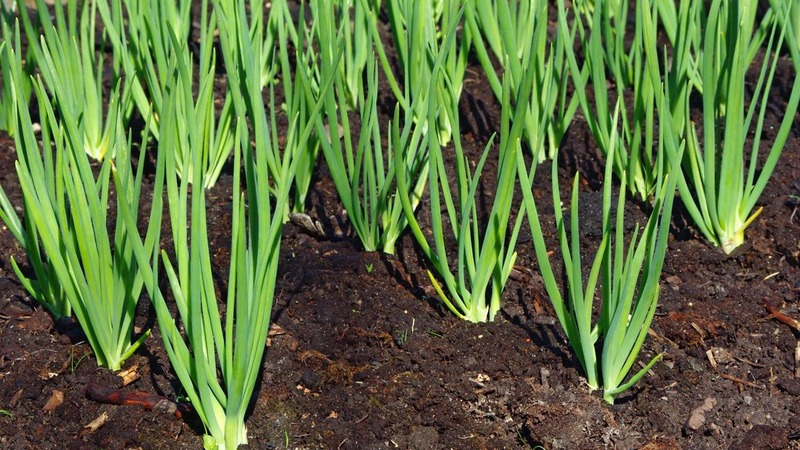
Step-by-step instructions for transplantation
The onion plantation is inspected and strong and healthy nests are dug out. They are then divided into individual stems (puppies), which are used as seedlings.
Each stem is checked for the presence of onion fly larvae. Seedlings with reddish spots on white stems are discarded. Healthy planting material should be free of rotten and damaged areas, the legs should be white, without colored inclusions.
The roots are cut by a quarter, the green feathers are shortened by half to prevent moisture evaporation during the process of rooting and adaptation to a new place.
Seating is done using the strip method, placing planting material every 20-25 cm, maintaining a width of 40-45 cm between rows.
In the prepared beds, holes are made with a wooden peg and seedlings are scattered 1-2 at a time. in one hole. The legs are sprinkled with earth and compacted. There is no need to water the area.
Reference. The harvest of young onions after autumn transplantation is harvested in April.
Experienced summer residents advise using the bridge planting method - placing the children close to each other and covering them with sawdust or earth mixed with humus 2:1. The height of the embankment is 2-3 cm. Subject to the rules of agricultural technology, from 1 sq. m. m manage to collect about 15 kg of greens.
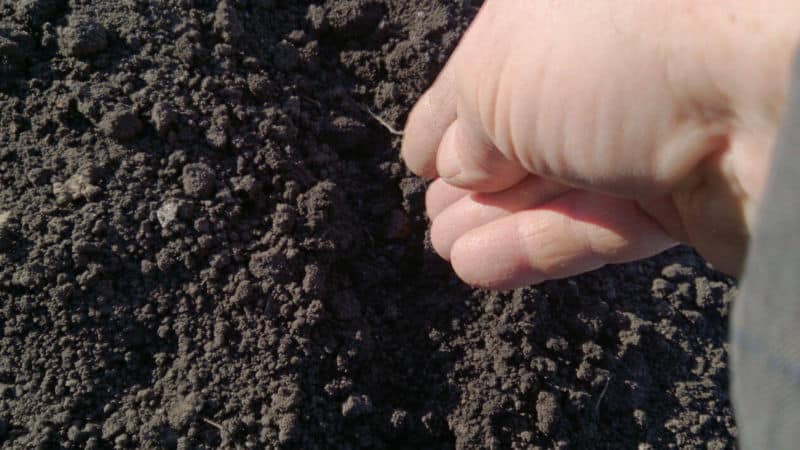
Further care
After onion transplantation, no winter maintenance procedures are necessary. In the spring, after the snow melts, the plant begins intensive forcing of young greenery.
Agricultural technology is aimed at thinning thickened plantings (if necessary), fertilizing with growth stimulants “Epin”, “Zircon”, watering, and caring for beds.
Basic rules for caring for the trampoline:
- Watering performed as needed. At first, the young plant has enough melt water. Next, the gardener sets the watering schedule based on weather conditions. The soil is spilled to a depth of 20 cm. In dry weather, the onions are watered every other day. The standard frequency of watering is twice a week at the root.
- The beds are regularly loosened after rain and watering. Weeding of weeds is carried out as they grow, preventing rooting.
- As a top dressing They use wood ash, which also protects the crop from insects. A solution of mullein (1:10) or chicken manure (1:15) is suitable for watering the beds. Ready-made complex fertilizers “Vegeta”, “Agricola-O”, “Effecton” are popular.
- The complex of care procedures includes disease prevention onion and preventing the spread of onion fly.
The plant is susceptible to downy mildew (peronospora). Signs of the disease are a gray-purple moldy coating on the greens and stunted growth.
Onion plantings are often affected by rust.The disease manifests itself in the form of round spots of rich yellow color. The marketability of green feathers is deteriorating, leaf blades are dying, and yields are falling. For prevention and treatment, copper sulfate, “HOM”, “Oxychom”, and a 1% solution of Bordeaux mixture are used. The plantings are treated 2-3 times.
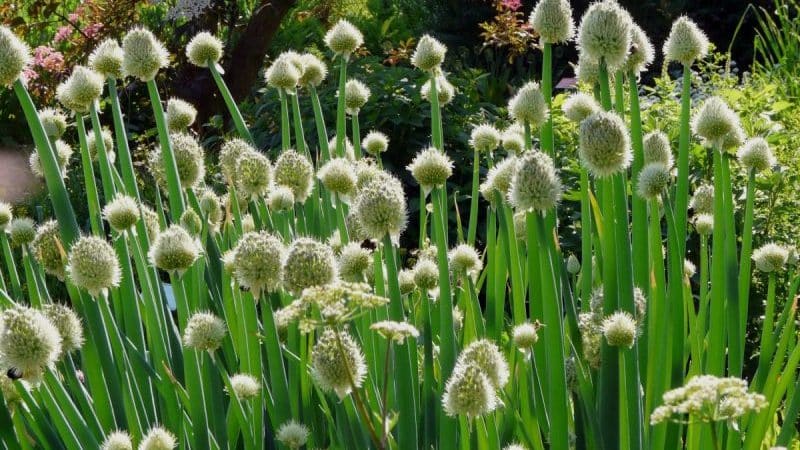
The spring onion becomes the subject of attacks by the onion leaf beetle. Greens are eaten by both larvae and adults.
The onion weevil makes punctures and feeds on plant juices. The larvae gnaw through greens and feed on plant tissue.
Onion fly larvae eat the bulbs, causing the green mass to wither and turn yellow.
The onion secretive proboscis overwinters in unharvested weeds and the top layer of soil. The pest comes to the surface after the snow melts and destroys young greenery.
Toxic chemicals are not used to treat the transplanted baton. Substances harmful to humans accumulate in feathers, causing further poisoning of the body.
The development of infectious diseases of batun is easier to prevent than to deal with the consequences. Prevention is based on:
- compliance with crop rotation, watering and loosening regimes;
- increasing soil fertility;
- timely removal of weeds, diseased and dead plants;
- planting healthy seedlings (children);
- mulching the soil with peat, sawdust, covering with agrofibre.
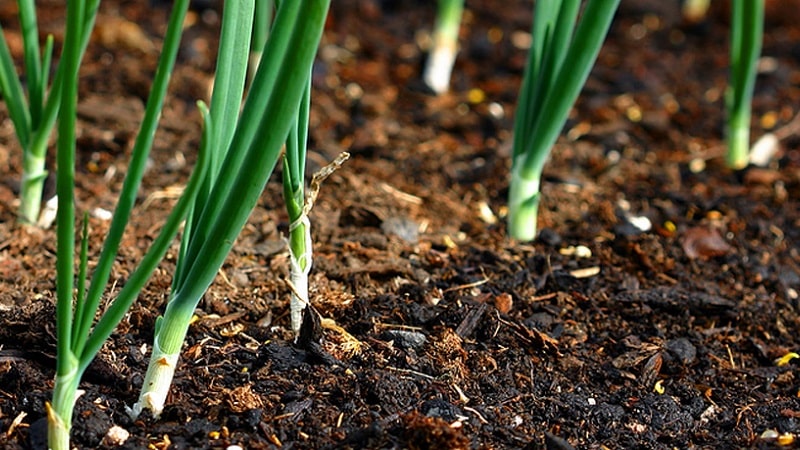
Conclusion
Replanting onions in the fall is an excellent way to rejuvenate the plant and prevent the spread of onion flies in the area. It is recommended to replant annually to a new location by dividing the bush. The area for planting is prepared in advance: the soil is loosened, the fertility level is increased and the pH is normalized.
It is preferable to plant the batun in an area where cabbage, zucchini, tomatoes, and legumes were previously grown.Further care of the plantings includes sufficient watering, loosening and weeding of the beds, fertilizing, and preventing diseases and attacks by insect pests.